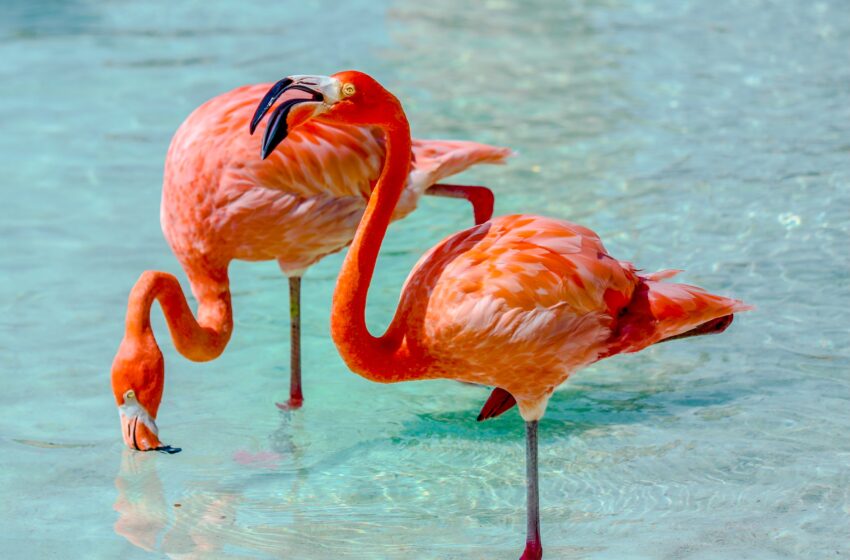
Aruba’s Only Travel Guide You Need For A Great Trip in 11 Easy Steps
- Destinations Americas
Cruisit Team
- May 4, 2022
- 0
- 4621
- 65 minutes read
Aruba’s Background
Aruba was discovered and claimed by Spain in 1499 but was taken over by the Dutch in 1636. Three major industries have dominated the island’s economy. A gold rush in the nineteenth century was followed by prosperity brought about by the building of an oil refinery in 1924. Tourism saw a rise in the latter decades of the twentieth century. In 1986, Aruba seceded from the Netherlands Antilles and became a distinct, autonomous part of the Kingdom of the Netherlands. The march for complete independence was suspended in 1990 at the request of Aruba.
Located north of Venezuela, is known for its magnificent white beaches, wind-sculpted desert landscapes, and some of the greatest wreck diving in the Caribbean. Aruba is a reasonably dry island with year-round pleasant weather. Because of its location in the far south of the Caribbean, it is immune to most storms, allowing sunbathers to enjoy the island’s outdoor activities and water sports at any time of year.
Oranjestad, Aruba’s lovely city, is a delightful cruise ship port full of sights and family-friendly activities. Stroll around the colorful Dutch colonial buildings, see the galleries, stores, and museums, or take a tour of the Aruba Aloe Museum and Factory or The Butterfly Farm.
A Caribbean island that is over twenty miles long and six miles wide. It is Venezuela’s nearest Caribbean island and an independent dependency of the Kingdom of the Netherlands. It is a flat island with no rivers, although it is famous for its white-sand beaches. It has a mild temperature and receives minimal rain, making it an ideal holiday spot. It’s also conveniently placed outside of the storm belt in the Caribbean.
“Imagine a place that is influenced by 90 nationals with Dutch and Spanish Architecture on an island“
Aruba is the most visited island in the southern Caribbean, thanks to North Americans fleeing winter. The allure is obvious: miles of magnificent white-sand beach, an abundance of all-inclusive resorts, and a retro, compact city, Oranjestad, perfectly adapted to the short strolls preferred by cruise-ship passengers. It’s all about the sun, having fun, and spending money.
If you go out from the resorts, you’ll be in for a wonderful treat. Rugged, windswept panoramas and empty beaches may be found at the island’s extreme extremities, making them ideal for trekking and horseback riding. The crystal-clear seas are teeming with sea life and shipwrecks (as well as an airplane crash or two), making for fantastic snorkeling and diving possibilities. And the constant breezes provide for near-ideal conditions for windsurfing and kiteboarding.
So, whether you want to relax on a beach or explore the great outdoors, Aruba has you covered. That is one happy island!
The country’s geography may be generally split into two areas. The Atlantic Ocean runs along the northeast coast, which features a rocky shoreline with few beaches and desert-like flora. It’s also noted for its choppy waves and dangerous currents. Alternatively, the famed, gorgeous white sand beaches on the southwest half of the island may be found. The oceans are calm, and the water is a vibrant turquoise blue. The water is also reasonably warm, making it an ideal location for swimming.
- Relax on one of Aruba’s beautiful beaches. From the popular Eagle and Palm Beaches to the more remote Arashi and Baby Beaches.
- You can kitesurf at Bachelor’s Beach, Boca Grandi, Boca Prins, Dos Playa, Black Stone Beach, or Boca Andicuri.
- Oranjestad, the lovely and colorful capital, is a must-see.
- Take a look at the flowers at Wilhelmina Park.
- Visit the Aruba Historical Museum, which is filled with relics, to get a taste of Aruba’s past.
- Hike to Hooiberg for a panoramic view of the city.
- Explore Arikok National Park, which encompasses about 20% of the island.
- Divers may choose from a variety of dive destinations such as Antilia, Jane Sea, Pedernales, Skalahein Reef, Plonco Reef, and Mas Bango Reef.
- Swim and snorkel at the Natural Pool.
- Waterpark fans may ride horses from Rancho Daimari to De Palm Island, an all-inclusive slice of bliss.
- Feed the flamingos at Flamingo Beach.
- Because this island is positioned outside of the Caribbean storm zone, it’s an excellent choice for an autumn holiday. It does not pose the risk that your trip may be canceled or damaged by an unforeseen hurricane, as do other Caribbean Islands.
- There are several etiquette norms that should be followed when on vacation here. Beach clothing, in instance, are often exclusively worn on the beach. Jeans are normally not permitted to be worn at a fine restaurant. Greetings are crucial here as well, so make sure you greet someone respectfully when you meet them, and always ask before photographing someone.
- Aruba does not have a domestic airline. American Airlines, AirTran, United, and US Airways are some of the more prominent airlines that link this island to the United States.
- Because this is a tiny island, public transportation is adequate. It is not always essential to rent a car when visiting. If you do decide to hire a car, make sure you choose with a reliable company. Many automobile rental firms, including the larger chains, frequently hire out older vehicles with a high mileage and in poor condition. Check the vehicle’s condition before leaving the rental agency’s parking area.
- If you want to go shopping, there are lots of options nearby. However, many of the stores close during the lunch hour. It is not uncommon for them to close on Sundays as well, so organize your shopping schedule ahead of time to ensure that you have the most alternatives accessible to you.
- There are a lot of American restaurant chains on the island, especially around the more popular resort regions. They are also rather widespread in the island’s urban areas. There are some good, high-end restaurants near some of the resorts, but the quality of others varies greatly. Read some reviews ahead of time to ensure you’re dining at a respectable establishment. Local eateries are another fantastic choice for enjoying some inexpensive, local food while having a more distinct and authentic experience.
- You don’t have to stay at a resort to enjoy all Aruba has to offer.
- Although English is commonly used in Aruba, the original language, Papiamento, is a lovely creole language inspired by Spanish, Portuguese, Dutch, and a variety of African languages. The Dutch language will also get you by in Aruba.
- The tap water in Aruba is perfectly safe to drink! This makes it much easier to keep hydrated. I would always recommend taking a bottle of water with you.
- If you are an American, you will not need to bring a converter or adapter to charge your phone, computer, or camera battery. Aruba, fortunately, adopted the same voltage standard of 110V. Furthermore, the plug kinds you’ll come across are usually always the same.
- Plan to carry light, breathable clothing for your trip to Aruba. In the nights, you may also wish to wear a light jacket.
- Gambling is permitted in Aruba, and the legal drinking and gambling age is 18.
- When you eat at a restaurant, a tip of 10-20% is normally included in the bill. If not, or if you want to leave a little more, a 15% tip is customary.
- Iguanas are endemic to the island and you will most likely spot them while exploring. Don’t worry, they won’t disturb you and will usually flee as you approach.
- Aruba is just 15 miles from Venezuela’s shore. On a clear day, you may be able to see Venezuela from the island’s highest points (for example, from Hooiberg).
- Americans must have a valid passport to visit Aruba, but they do not require a visa! As a tourist, you can stay in Aruba for up to 30 days.
Crime & Scams
Aruba is frequently regarded as one of the Caribbean’s safest islands. It has an incredibly low crime rate and is located outside of the hurricane belt, making it a perfect family vacation location.
The major tourist sites are usually safe; nonetheless, basic measures should be taken, such as avoiding rural areas at night. Bring no valuables to the beach, and leave no valuables in your car. Check that handbags and purses are securely fastened and difficult to steal.
Health
Dr. Horacio Oduber Hospital in Oranjestad, the Centro Medico Rudy Engelbrecht in San Nicolas, the MedCare Clinic in Noord, and the private Urgent Care Clinic in Noord are the island’s four medical centers.
Aruba is well-equipped to manage almost any medical issue. In rare circumstances, if the island’s own medical resources are insufficient, a patient can be immediately flown to adjacent hospitals (i.e. In Curacao). There is an air ambulance available, and this aircraft is outfitted with an ICU unit.
Despite this, Aruba boasts one of the Caribbean’s greatest healthcare systems. If the island’s medical facilities are unable to treat serious medical conditions, the patient can be flown for conventional medical care.
Shoulder Seasons
Also the best season to visit Aruba, running from April to August, when the island’s expensive prices are reduced. Tropical storms are also improbable at this period due to the island’s location well outside the hurricane zone. The weather is beautiful from January through March, but accommodation prices may spike.
High (Peak) Season
The peak season in Aruba lasts from December through May. This is the period of year when temperatures are most consistent and rainfall is at its lowest. It is also before hurricane season, which decreases the possibility of heavy rain or strong winds from distant storms.
Off-Season
A massive sale runs from mid-April through mid-December. All resorts continually cut their hotel prices, which means that you may get the same rooms for 20% to 50% less than you would.
Aruba’s temperature remains pretty steady year-round, ranging from 29 to 31 degrees Celsius, and it remains pleasant in the evening.
By Plane
At Queen Beatrix International Airport, there are frequent nonstop or simple single-connection flights from most major U.S. cities, as well as daily flights from all major hubs throughout the world. American, Canadian, Caribbean, European, and most South American nationalities do not need visas to enter Aruba.
By Boat
The ferry services that used to operate in the region are no longer available. Cruise ships, private boats, and yachts dock at Oranjestad, which is located in the heart of the city and is only a five-minute walk from the center.
By Tram (Trolley)
The free open-air trolley is a welcome addition to downtown Oranjestad, and it’s a terrific way to go around the main street’s retail and dining areas without having to travel too far. Hop aboard to travel to your precise location or to simply enjoy a free journey.
Some trolleys are even double-deckers, giving passengers a 360-degree panorama of the downtown area. Because it circles from the retail districts to the cruise ship port, cruise tourists commonly utilize the trolley service.
If you’re ready to board, the trolley begins service at 10 a.m., with 25-minute intervals and a break from 12 p.m. to 1 p.m. At 5 p.m., the last trolley of the day departs from the cruise port.
By Bus
If you’re searching for a more cost-effective option, try taking the bus, which is simple, inexpensive, and handy. Arubus, the local bus company, operates several routes throughout the island. The best thing is that you won’t have to do any of the driving!
Because the bus terminal is directly across the street from the cruise port in downtown Oranjestad, cruise tourists prefer to go around by bus.
Day passes are available for around $10. A round journey costs $5. A day pass, on the other hand, allows you to travel wherever you want all day, as often as you want, so it’s a terrific choice for those of you looking to do some serious sightseeing!
By Car
If public transportation isn’t your style, or if you want to tour the entire island, private vehicle rentals are the way to go. Super Limousine Aruba, Kini Kini Transfers & Tours, and EL Tours also offer limousine services on the island.
Renting a car is a terrific choice for individuals who want to explore our island’s off-the-beaten-path natural beauties and activities. Why? You’ll be able to get up and go anytime and anywhere you choose!
Renting a car in Aruba allows you to visit as many beaches as you want, go to other cities to meet the people, and explore regions of the island where buses and taxis either don’t go to or only go occasionally. Renting a car is the best method to navigate about Aruba if you want to feel free to go wherever you wish.
I strongly advise you to spend at least part of your journey exploring the diverse landscapes of our Arikok National Park, where the possibilities are nearly limitless. These Aruba vehicle rentals will assist you with your transportation needs in Aruba, allowing you to get on the road quickly, safely, and inexpensively!
The following firms are available: Amigo Rent a Car, Aruba Top Drive, Sunset, Aruba XL, and Wheels 2 Go car rentals.
George’s Cycle Co, Aruba Motorcycle Tours, and HS Rentals Aruba also hire scooters and motorcycles in Aruba. Bikes may also be rented through Tri-Bike Aruba and Aruba E-Bike Tours.
By Taxi
Taxis are one of the most convenient modes of transportation. Because Aruba is not a large island, you’ll be able to get to your destination quickly. The taxi drivers are really pleasant, and because there are fixed charges, you don’t have to worry about overpaying for your taxi ride.
Taxis are widely accessible on most major highways, but drivers are also simply a phone call away around the island.
Getting a cab is also simple! You may easily call a cab yourself if you have cell service. If not, you can request one from your hotel’s concierge or front desk employee.
By Boat
You can rent a boat or small yacht from a variety of providers on the island, or if you have your own private boat, it’s an alternative to moving around Aruba’s many beaches. However, make sure you follow all rules and regulations, including any clearances, registrations, inspections, or permits required to sail within Aruba’s territorial waters.
Aruba’s two mobile providers are Digicel Aruba and Setar Aruba. You may obtain your SIM card at the airport, but it is best to get it from an official shop outside the airport. However, if you’re not in a rush, getting your SIM at the airport might be a bit more expensive. Due to their data packages and low costs, Digicel was recommended more than Setar Aruba. Prices for up to 15GB of data start at $5.
You may also get a prepaid eSim card from a company like Airalo, SIMCorner, or Nomad. All the providers offer data-only plans that may be used with an eSim-enabled phone, so make sure your phone is compatible. It is also possible to sign up for a Solis WiFi Hotspot. Check before you travel because they only serve select areas. Airalo provides the most extensive coverage of over 180 nations.
Local Internet & WiFi
Many hotels, restaurants, and bars offer free Wi-Fi to their guests and the general public. There are several additional public areas on the island that offer free Wi-Fi. The speeds vary from location to location, but in general, extremely good connections are commonly available.
Top Places in Aruba
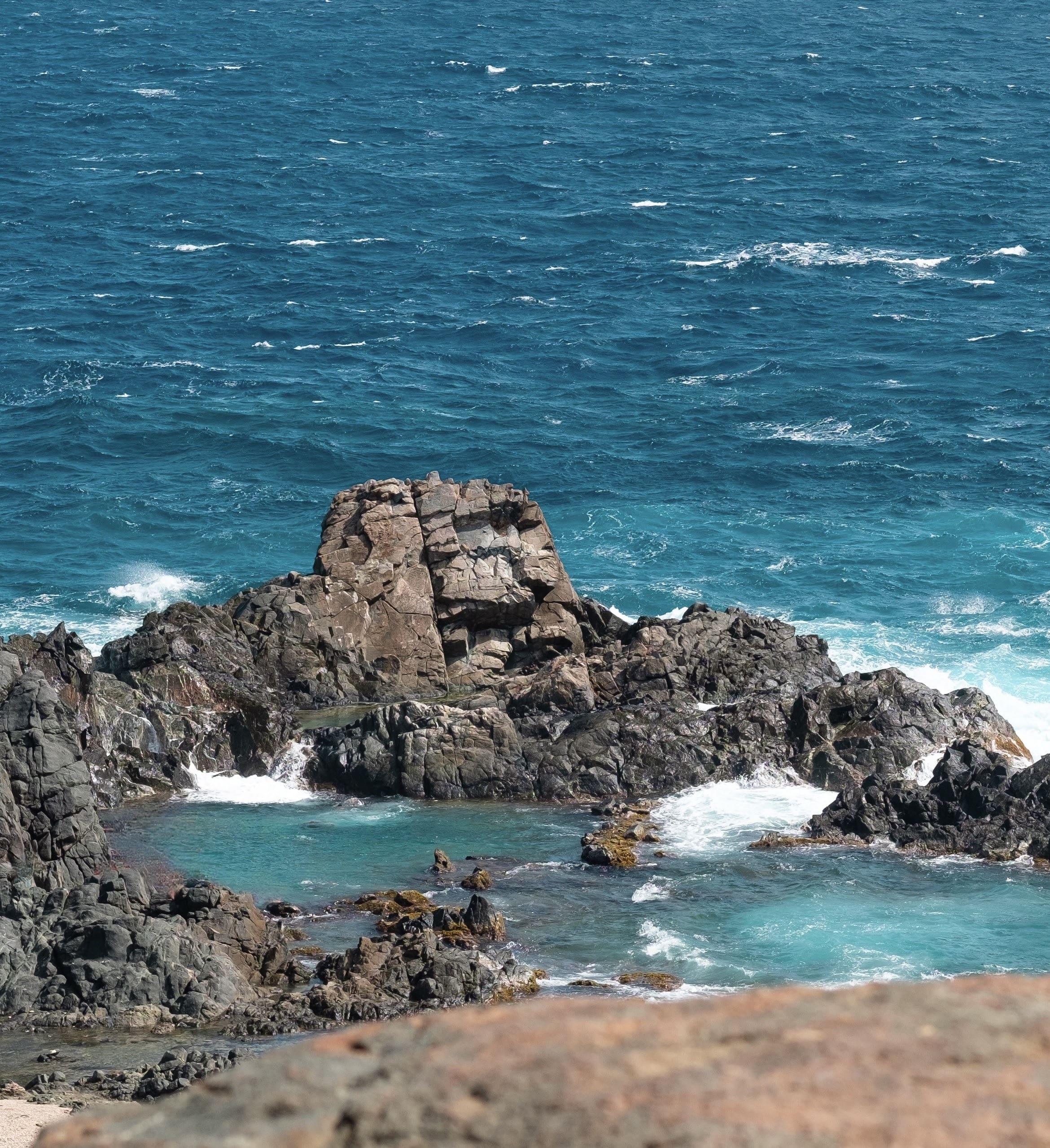
Conchi Natural Pool
This is a one-of-a-kind spot on Aruba’s northern coast. It can only be reached by ATV or Trail Rated 4×4, but it is definitely worth the effort. It’s a modest hidden pool nestled within a lovely rock structure. It’s a great day drive, but be sure your car is capable of handling the distance. The Natural Pool, commonly known as “conchi” or “Cura di Tortuga,” is a natural swimming pool in a rural location in east Aruba. It’s made out of rock and volcanic stone rings. The pool is only accessible by four-wheel drive, all-terrain vehicles, horseback, or on foot due to the rocky terrain surrounding it. From the park’s entrance, there is a hiking route.
Aruba Ostrich Farm
This is a fascinating working farm. It is more of a learning experience for visitors, but it is still a wonderful destination to see. The majority of the ostrich meat available in Aruba nowadays is imported from the neighboring island of Curacao.


Arikok National Park
The Arikok National Park covers an area around 18 percent of Aruba’s total area and has three major geological formations. These formations have had a direct impact on both Aruba’s human settlement and its natural beauty. Aruba is home to various species that are unique to the island, including two snake species and two bird species. The park has some of the island’s earliest Arawak artwork and has subsequently piqued the government’s interest.
Bubali Bird Sanctuary
The Bubali Bird Sanctuary is a 20-hectare wetland area on the island of Aruba, a Dutch Caribbean component republic. BirdLife International designated it as an Important Bird Area because it and its surrounding vegetation sustain populations of a wide range of birds, including endangered and restricted-range species, as well as substantial seasonal numbers of migrating waders and neotropical passerines. The wetland, which was originally designed as a wastewater treatment facility, is endangered by aquatic plant invasion, which reduces the area of open water.

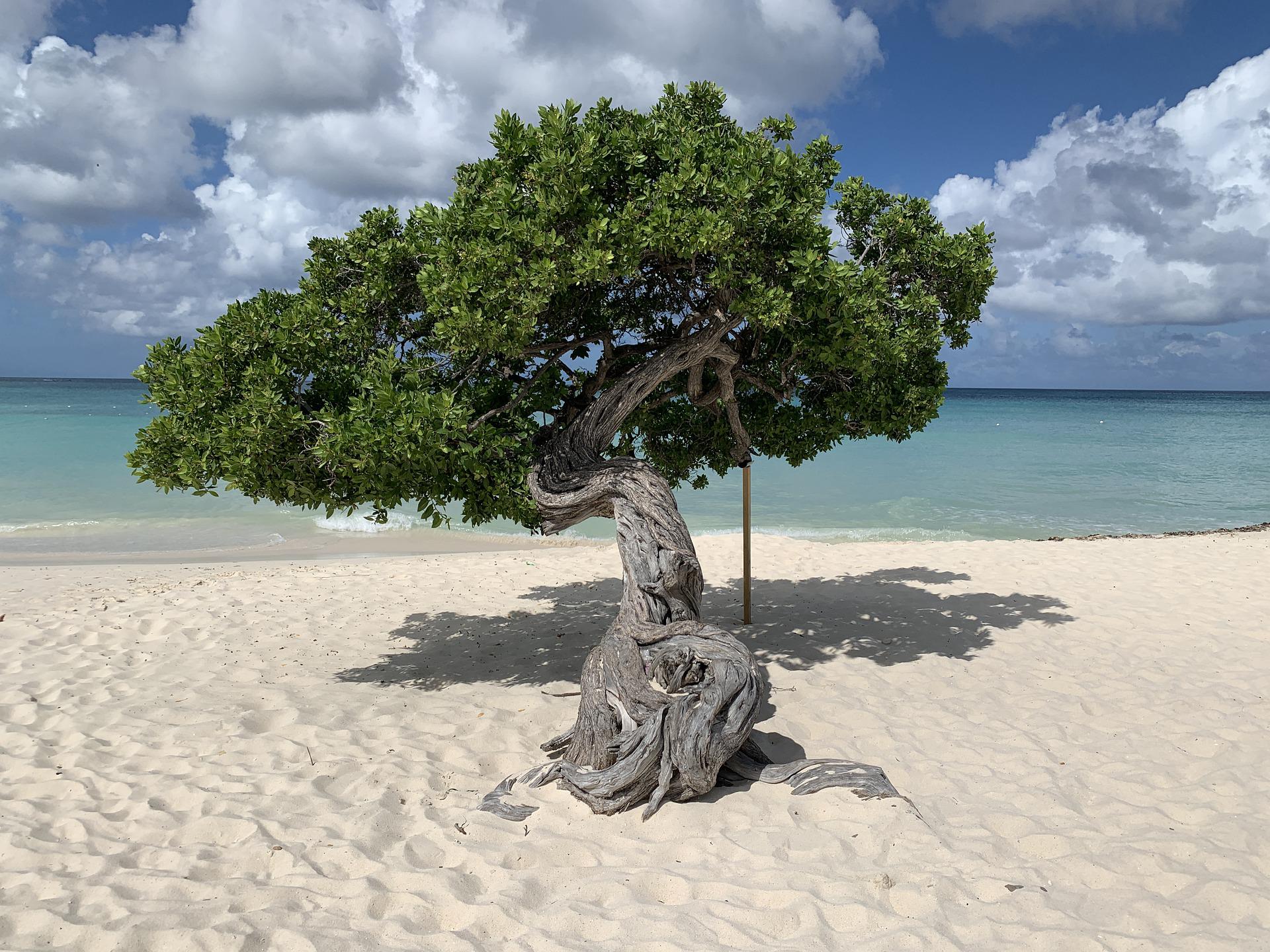
Eagle Beach
Eagle Beach is a beach and neighborhood in the Aruba city of Oranjestad. The area is well-known for its low-rise resorts and large public beach. It is Aruba’s widest beach, with smooth white sand. It has been named one of the world’s top beaches. This is not a barefoot beach. On Aruba, public nudity is prohibited. Topless sunbathing is permitted on some resort beaches, however it is not permitted on resort grounds.
7-day Itinerary in Aruba (with extension options)
Day 1
Arrive at Aruba
The major factor that will influence how you spend your first day in Aruba will depend on whether you arrive early or late.
If you arrive early, you may leave your luggage at your hotel and relax on one of Aruba’s many lovely beaches. You may even beach hop between them by paddling about in a kayak.
The island’s most famous and largest beach, with stunning blue sea and the famed Divi Divi tree found in Eagle Beach
Another option with an extended stretch of high-rise resorts, nightclubs, shops, and restaurants facing the sandy beach, Palm Beach is where all the excitement is in Aruba.
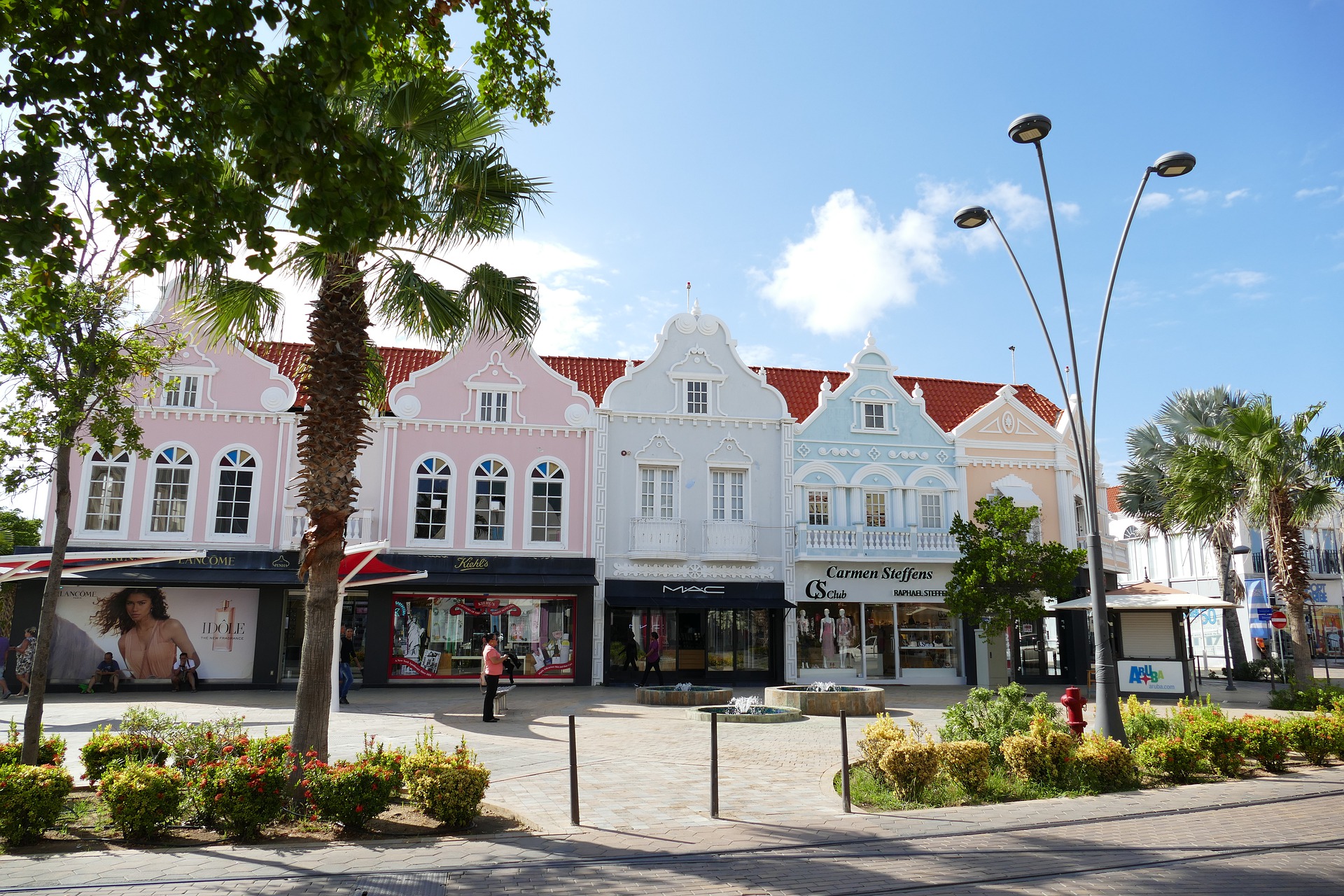
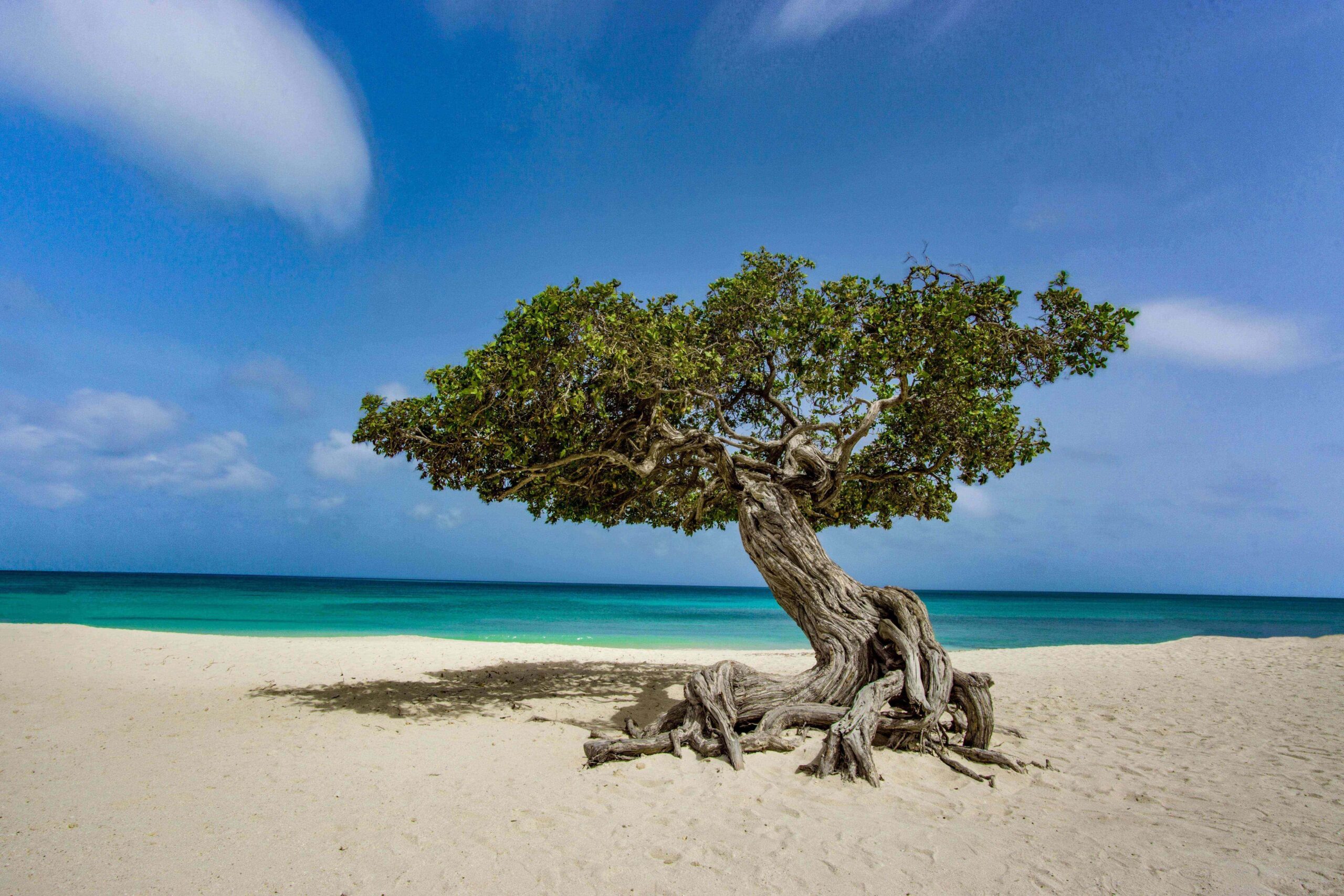
A more secluded option, located on the island’s southern tip, Baby Beach, this calm place is a local favorite because it is a bit of a drive from the main tourist sites. It acquired its name from the warm, bath-like water in the sheltered bay, making it an excellent choice for families.
If watersports are what you like, one of Aruba’s top kiteboarding beaches, Boca Grandi features a tough surf, consistent winds, and a lengthy stretch of white sand. Another is located in the Noord region, Arashi Beach offers some outstanding surf locations and is renowned for snorkeling because to the coral reefs and wrecks located offshore.


- Backpacker:
- Budget: Lind Hostel & Guesthouse
- Mid-range: Tomu's Hotel
- High end:
This section will be added shortly.
This section will be added shortly.
Day 2
Dive, Snorkel, or Submarine tour
Divers may choose from a variety of dive destinations such as Antilia, Jane Sea, Pedernales, Skalahein Reef, Plonco Reef, and Mas Bango Reef. If diving is too much for you or you are not yet a qualified diver, you can snorkel there.
We say yet because you may begin your diving adventure in Aruba at one of the numerous schools that provide the PADI certification course. If you prefer diving, you can expect to pay roughly $100 for renting your equipment and $80 if you have your own.
Alternatively, take an Atlantis Submarines Expedition into the Caribbean Sea to view Aruba’s underwater environment from 130 feet below. This 90-minute trip begins from Oranjestad and is likely to be one you won’t forget… When else can you go on an actual submarine ride?!


Whether you choose to dive, snorkel, or take a submarine, keep a lookout for barracudas, turtles, and possibly the Antilla, a World War II German freighter that sunk and became the Caribbean’s largest shipwreck.
Back on land, spend the afternoon touring Oranjestad, Aruba’s colorful capital and one of the Caribbean’s most vivacious. The Dutch-inspired facades are the next best thing to being in Amsterdam and are filled with duty-free shops, cafés, jewelry stores, and luxury boutiques.
There’s also a free tourist tram that runs from the Submarine’s cruise terminal’s gift kiosks through the streets to the opposite side of town.



Heading out to De Palm Island for a day of fun in the sun is one of the greatest day excursions in Aruba for families. Their dock is 10 minutes from Oranjestad, and a short boat trip over delivers you to the action-packed island, which has multi-story waterslides, banana boat rides, volleyball games, beachside cabanas, and fantastic snorkeling. Oh, and there are flamingos as well.
A couple Chilean Flamingos, standing four to five feet tall, flock along the coastline. A little fence surrounds the lagoon where the birds feed to protect visitors from touching them, but if you rent one of the palapas on this length of sand, you’ll have a front-row seat to watch the birds all day.

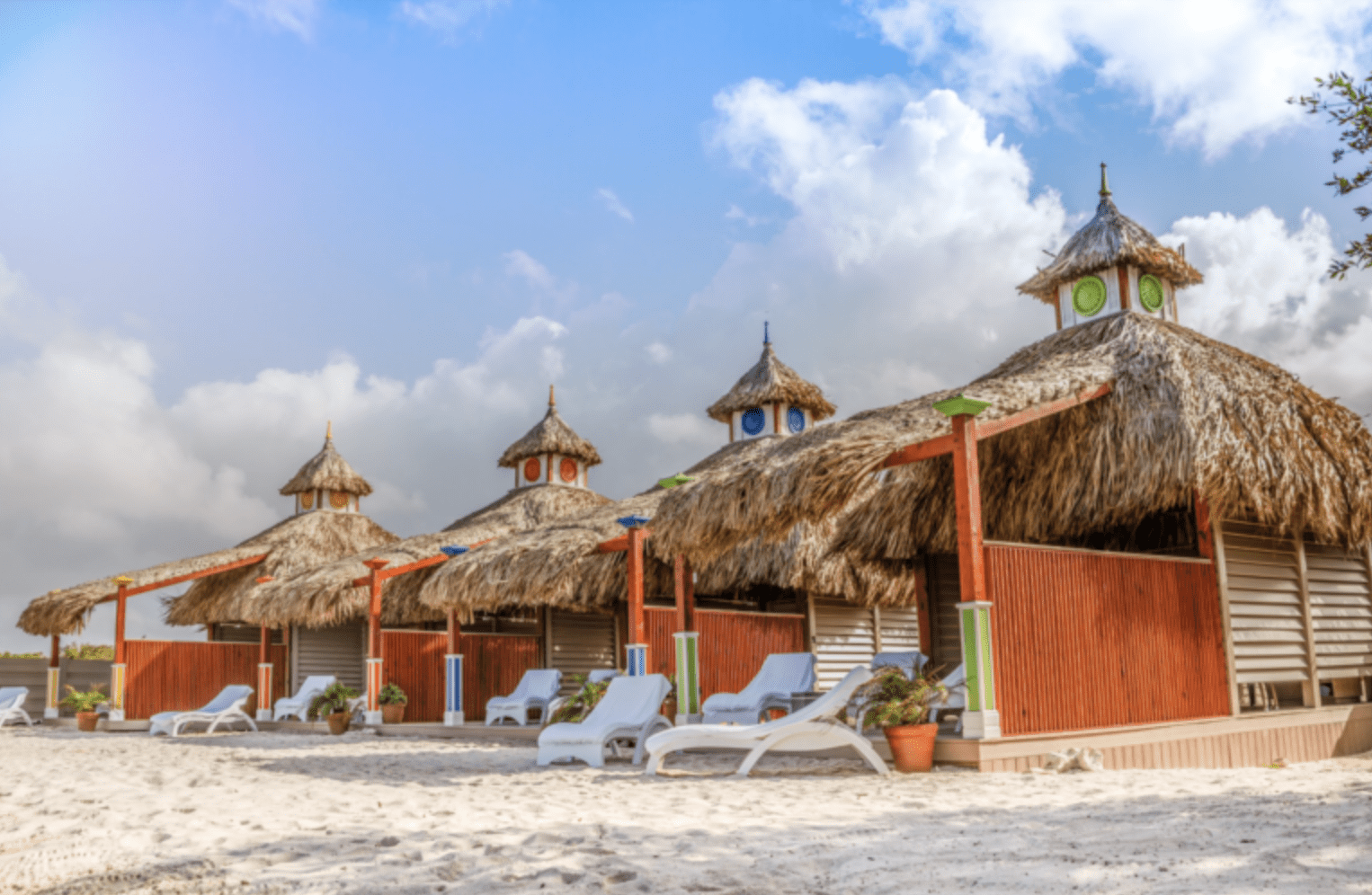
Aside from SNUBA and the underwater helmet walk, nearly all activities on De Palm Island are included in the half or full-day cost, as are food, drinks, and beverages from a handful of on-site eateries.
For a more lavish experience, reserve one of the private cabanas perched above the coral-fringed sea for the day. Each one takes up to eight people and comes equipped with an outdoor shower, a sundeck with lounge chairs, and a fridge loaded with refreshing drinks and a bottle of chilled Prosecco. You’ll also have a dedicated servant who will bring you refreshing beverages throughout the day, making De Palm Island one of the most remarkable Aruba attractions.
Day 4
San Nicolas, Donkey Sanctuary and Baby Beach
Head south to colorful San Nicolas, called the “Sunrise City” and well recognized for its burgeoning arts scene.
San Nicolas, Aruba’s second-largest city, feels a world apart from glamorous commercial areas like the high-rise region, and boasts around five blocks of enormous murals covering its downtown streets. Allow at least 30 minutes to view the artwork, which includes two-story flamingos, seashell angel wings, and cactus sculptures, or arrange a walking tour to learn more about the artists and their works. There are also galleries and businesses selling artisan jewelry and prints.


While you’re at it, stop into Charlie’s Bar, an island institution dating back to the 1940s. Originally a popular hangout for scuba divers, they began attaching their unique aquatic finds, such as Popeye figures and registration plates, to the walls, transforming it into an unofficial exhibition.
The Donkey Sanctuary in Bringamosa, which was founded in 1997, is the next stop. It is home to 130 hairy, four-legged creatures. The herd enjoys meandering out into the dusty road, and if you happen to be driving by, you’ll be welcomed with a ‘hee haw’ and a long nose poking through the window in the hopes of snatching a treat.
Continue down to the island’s southernmost tip for some sun time to round up your day of Aruba sightseeing. If you want to unwind, go to Baby Beach and rest in the tranquil bay or take a walk along the long, shallow shorelines. Those looking for a thrill should bring a surfboard and hit the water at Boca Grandi to ride the challenging surf waves.


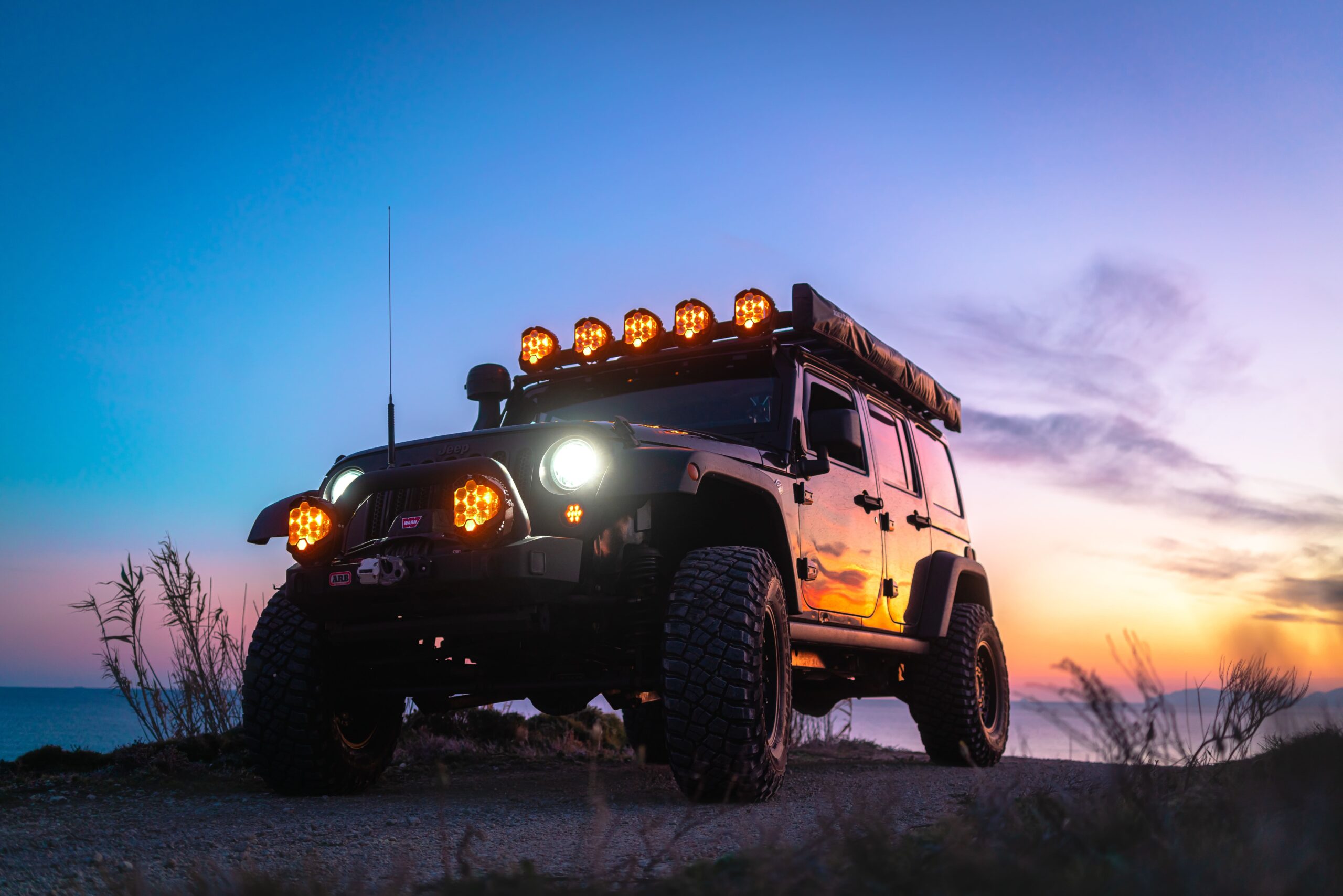


Days 5 to 6
Aruba expeditions
Road excursions are a great way to discover a new area, especially in Aruba, which offers a healthy mix of paved highways and rugged dirt paths best suited for 4x4s. Rent a car or schedule an off-road safari to take you to some of Aruba’s top attractions.
Among one of the best tours in Aruba lies in the east side of the island’s rugged desert environment, ripe for exploration. In Arikok National Park The environment is dotted with dramatic waves, limestone cliffs, and cactus, as well as natural wonders such as the Natural Pool formed by a volcanic rock and famous for snorkeling and swimming.
Another great sighting was built in 1914 to warn sailors of the dangerous shoreline as they approached the island, the brilliant, white California Lighthouse is a beacon on the north end of the island. Visitors may ascend a winding, narrow staircase to the observation platform near the summit, which provides an excellent view of the sunset.


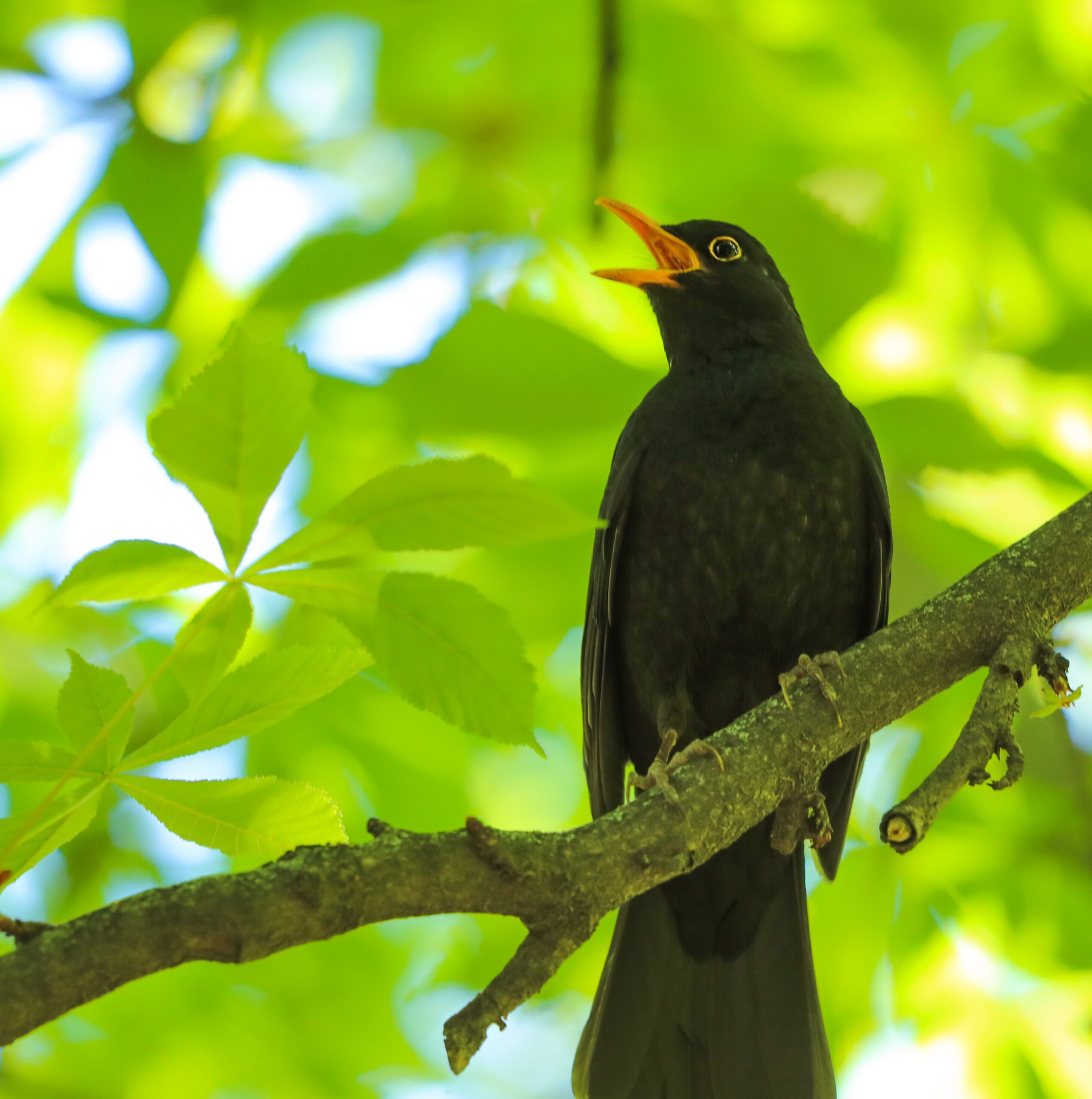
Make sure to also visit Alto Vista Chapel. This Roman Catholic Church, which dates from 1750, has a lovely, sunshine-yellow front and is accessible by a driveway decorated with white crosses.
Gold makes the world go around, and in Bushiribana Gold Mill Ruins, Aruba’s first gold discovery occurred in 1824, resulting in the production of more than three million pounds of gold on the island. The remnants of the gold rush are a must see and may still be found at an ancient mill, which processed ore from mines in the adjacent hills.
Another wonder that you must see are the Casibari Rocks. These massive stones that appear to be haphazardly arranged, you can trek up to the summit. There’s a magnificent panoramic vista there that’s a great place to watch the sunset.
The Bubali Bird Sanctuary is a bird-watching paradise on Aruba’s island. The flora supports a diverse range of bird populations, including rare and strictly limited species, as well as significant seasonal amounts of migratory ducks and neotropical passerines.
Day 7
Departure Day
You will be getting out of Aruba today after your breakfast so you can catch your flight back home, or maybe head on to the next trip on the next plane or cruise.

The Most Popular Food in Aruba
For such a small Caribbean island, Aruba has a complex cuisine culture. It’s a wonderful mix of international cuisine inspired by over 90 different cultures and civilizations, primarily Dutch and Spanish, and is available at over 200 fine dining places, cafés, and booths around the island. While it might be tough to discover local eateries in Aruba, if you go outside of the more touristic areas, you may come across some wonderful ones.

Keshi Yena
This is a classic Aruban main dish made with Edam shells. The base of the cheese is stuffed with seasoned meat, such as chicken, then baked or steamed until done.

Stobas (stews)
Despite the tropical environment, stew (stoba) is a favorite hot comfort dish in Aruba. It’s usually cooked with beef or goat, although conch stew (calco stoba) is also popular.
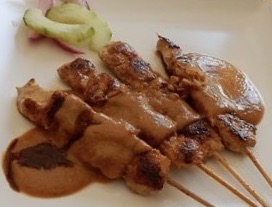
Satee
Although it originated in Indonesia and was brought to Aruba by the Dutch, this meal has grown in popularity throughout the island. Skewers of marinated meat, such as chicken, are served with a peanut-based sauce in this meal.

Sopi di pampuna
Sopi di pampuna is a tasty pumpkin soup from Aruba that is popular across the Caribbean islands. In addition to pumpkin, the soup contains salted beef, heavy cream, cinnamon, Tabasco sauce, and a mix of vegetables including onions, celery, leeks, and potatoes.

Arroz con Pollo
Although it originated in Spain, this rice and chicken meal has been adapted to reflect Aruban flavors. It’s a pilaf-style rice meal that’s widely accessible in various forms.
What's the Travel Budget for Aruba?
Flights
- Flights start at roughly $200 from nearby countries. Tickets however on average cost around $900 and can cost more depending on which class and from which country you depart from.
Accommodation
- Nomad Backpacking style travelers can expect to spend around $230 for a week
- Budget travelers can expect to spend around $300 for a week
- Mid-range travelers can expect to spend around $1050 for a week
- Luxury travelers can expect to spend around $2320 for a week
Food Budget (Three meals and drinks)
- Nomad Backpacking style travelers can expect to spend around $25 per person per day
- Budget travelers can expect to pay around $40 per person per day
- Mid-range travelers on average would cost $50 to $65 per person per day
- Luxury travelers can expect to pay around $100 to $140 per person per day
Overall Budget Styles (Not including Flights, Tours, Transportation, or Car Rental)
- Nomad Backpacking style travelers can expect to spend around $450 for a week
- Budget travelers can expect to spend around $620 for one person for a week
- Mid-range travelers can expect to spend around $1550 for one person for a week
- Luxury travelers can expect to spend around $3300 for one person for a week
Flights
- Flights start at roughly $200 from nearby countries. Tickets however on average cost around $900 and can cost more depending on which class and from which country you depart from.
Accommodation
- Nomad Backpacking style travelers can expect to spend around $230 for a week
- Budget travelers can expect to spend around $300 for a week
- Mid-range travelers can expect to spend around $1050 for a week
- Luxury travelers can expect to spend around $2320 for a week
Food Budget (Three meals and drinks)
- Nomad Backpacking style travelers can expect to spend around $25 per person per day
- Budget travelers can expect to pay around $40 per person per day
- Mid-range travelers on average would cost $50 to $65 per person per day
- Luxury travelers can expect to pay around $100 to $140 per person per day
Overall Budget Styles (Not including Flights, Tours, Transportation, or Car Rental)
- Nomad Backpacking style travelers can expect to spend around $450 for a week
- Budget travelers can expect to spend around $620 for one person for a week
- Mid-range travelers can expect to spend around $1550 for one person for a week
- Luxury travelers can expect to spend around $3300 for one person for a week
Flights
- Flights start at roughly $200 from nearby countries. Tickets however on average cost around $900 and can cost more depending on which class and from which country you depart from.
Accommodation
- Nomad Backpacking style travelers can expect to spend around $230 for a week
- Budget travelers can expect to spend around $300 for a week
- Mid-range travelers can expect to spend around $1050 for a week
- Luxury travelers can expect to spend around $2320 for a week
Food Budget (Three meals and drinks)
- Nomad Backpacking style travelers can expect to spend around $25 per person per day
- Budget travelers can expect to pay around $40 per person per day
- Mid-range travelers on average would cost $50 to $65 per person per day
- Luxury travelers can expect to pay around $100 to $140 per person per day
Overall Budget Styles (Not including Flights, Tours, Transportation, or Car Rental)
- Nomad Backpacking style travelers can expect to spend around $450 for a week
- Budget travelers can expect to spend around $620 for one person for a week
- Mid-range travelers can expect to spend around $1550 for one person for a week
- Luxury travelers can expect to spend around $3300 for one person for a week
Flights
- Flights start at roughly $200 from nearby countries. Tickets however on average cost around $900 and can cost more depending on which class and from which country you depart from.
Accommodation
- Nomad Backpacking style travelers can expect to spend around $230 for a week
- Budget travelers can expect to spend around $300 for a week
- Mid-range travelers can expect to spend around $1050 for a week
- Luxury travelers can expect to spend around $2320 for a week
Food Budget (Three meals and drinks)
- Nomad Backpacking style travelers can expect to spend around $25 per person per day
- Budget travelers can expect to pay around $40 per person per day
- Mid-range travelers on average would cost $50 to $65 per person per day
- Luxury travelers can expect to pay around $100 to $140 per person per day
Overall Budget Styles (Not including Flights, Tours, Transportation, or Car Rental)
- Nomad Backpacking style travelers can expect to spend around $450 for a week
- Budget travelers can expect to spend around $620 for one person for a week
- Mid-range travelers can expect to spend around $1550 for one person for a week
- Luxury travelers can expect to spend around $3300 for one person for a week
If you want to know what to pack, read this list below:
- This is a casual island country that can get extremely hot, dress accordingly
- Raincoat or Light Waterproof Jacket
- Hiking Boots or Sturdy Sneakers (Shoes You Don’t Mind Getting Wet)
- Sunscreen
- Insect Protection – Repellent and Clothing
- Sunglasses and Sun Hat
- Water Shoes
- Beach Towels/Sarong
- Dry Bag
- Money Belt or Cross Bag
- Portable Medical Kit
- Flashlight or Headlamp
- Copies of your passport.
- Get all the needed vaccinations before traveling
- A power bank is a must in any travel.
- Always have some cash with you just in case there are no ATMs and if you are dealing with a business that solely accepts cash
- Get yourself an adapter for your gadgets
- 1 toothbrush
- 1 tube of toothpaste
- 1 razor
- 1 package of dental floss
- 1 small bottle of shampoo
- 1 small bottle of shower gel
- 1 towel
- Deodorant
- Band-Aids
- Hydrocortisone cream
- Antibacterial cream
- Earplugs
- Tylenol
- Hand sanitizer (germs = sick = bad holiday)
- A key or combination lock
- Zip-lock bags
- Plastic bags (great for laundry)
- Universal charger/adaptor
- LifeStraw (A water bottle with a purifier)
- 1 dry shampoo spray & talc powder
- 1 hairbrush
- Makeup you use
- Hairbands & hair clips
- Feminine hygiene products
Clothing For Boys
- 1 pair of jeans or khaki pants
- 1 pair of shorts
- 1 bathing suit
- 5 T-shirts
- 1 long-sleeved T-shirt
- 1 pair of flip-flops
- 1 pair of sneakers
- 6 pairs of socks
- 5 pairs of boxer shorts
Clothing For Girls
- 1 swimsuit
- 1 sarong
- 1 pair of stretchy jeans
- 1 pair of leggings
- 2-3 long-sleeve tops
- 2-3 T-shirts
- 3-4 spaghetti tops
- 1 light cardigan
Want to plan your own trip, here are some of the best resources that can help you
- Skyscanner – They search small websites and budget airlines that larger search sites tend to miss. They are hands down the number one place to start.
- Momondo – This is another favorite flight search engine because they search such a wide variety of sites and airlines. Always check here too.
- Booking.com – The best all-around booking site that constantly provides the most affordable and lowest rates. They have the widest selection of budget accommodation.
- Couchsurfing – This website allows you to stay on people’s couches or spare rooms for free. It’s a great way to save money while meeting locals who can tell you the ins and outs of their city. The site also lists events you can attend to meet people (even if you’re not staying with someone).
- Intrepid Travel – If you want to do group tours, go with Intrepid. They offer good small group tours that use local operators and leave a small environmental footprint.
- Grassroots Volunteering – For volunteering, Grassroots Volunteering compiles a list of good local volunteer organizations that keep the money within the community.
- Get Your Guide – Get Your Guide is a huge online marketplace for tours and excursions. They have tons of tour options available in cities all around the world, including everything from cooking classes, walking tours, street art lessons, and more! It has the world’s largest collection of things to do with more than 30,000 activities in 7500 destinations.
- SafetyWing – Safety Wing offers convenient and affordable plans tailored to digital nomads and long-term travelers. They have cheap monthly plans, great customer service, and an easy-to-use claims process that makes it perfect for those on the road.
- Trip Advisor: Check the reviews and then book your accommodation. TripAdvisor is where you go when you want to compare prices with multiple accommodation providers.
- VRBO: is the main search engine to use when you are looking for a home or apartment rental. It can sometimes be cheaper than hotels and it is the best way to stay in areas that offer a more local feel.
- Hostelworld: With one of the largest databases of hostels in the world, Hostelworld is the go-to site when you are looking for budget accommodation.
- Rome 2 Rio: If you want to see how to get somewhere by plane, train, bus, ferry, or car Rome2Rio lays it all out for you as well as related costs.
- World Nomads Insurance: When traveling you should always have travel insurance. We have found the best bang for your buck is by far World Nomads.
Final Thoughts on Aruba
Aruba has a deep cultural history and a natural beauty, so vibrant that is worth traveling to.
Would you?
If you’ve been to Aruba let us know how your trip was in the comments below.